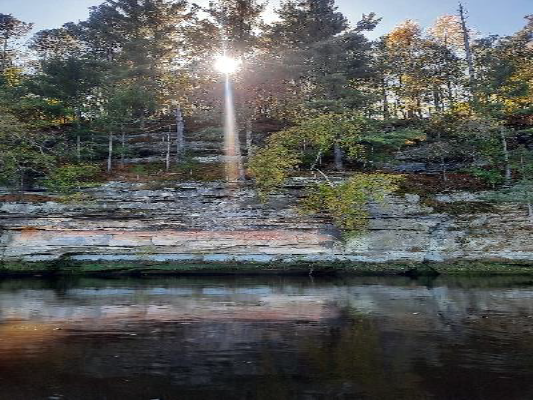
Beautiful views along the Wisconsin River. Photo: Beth Glidewell/USFWS.
In October, Genoa NFH mussel biologists joined colleagues from the Wisconsin DNR in a search for Salamander Mussel broodstock on the Wisconsin River. We were very lucky to have mild weather this far into the fall, leading to a day of spectacular scenery on the river and several gravid female mussels collected. These females will be kept over the winter at the hatchery- the cold water temperatures signaling the females to keep their larvae safe in their marsupial gills- a portion of the gills that are structured to incubate eggs as they develop into mature larvae. In the spring, we’ll remove the larvae from the female’s gills, allow them to attach to gills of Common Mudpuppy, and hopefully produce juvenile Salamander Mussels.
The use of the Common Mudpuppy- the only non-fish host used by North American freshwater mussels- makes this species unique. The Mudpuppy’s large filamentous gills and strictly aquatic nature makes them a very similar functioning host to fish species. They also move between local microhabitats, taking mussel larvae with them, just like a fish host. Both Salamander Mussel and Common Mudpuppy utilize similar habitats- protected spaces under large rocks in swift but stable areas of large rivers. These habitats have always been somewhat rare, but have been severely impacted by human activities leaving both of these species increasingly imperiled and in need of conservation focus. WI DNR biologists will be back in the river at this site and others in the spring looking for additional gravid females next spring propagation efforts- stay tuned for updates from this project!
By: Beth Glidewell
